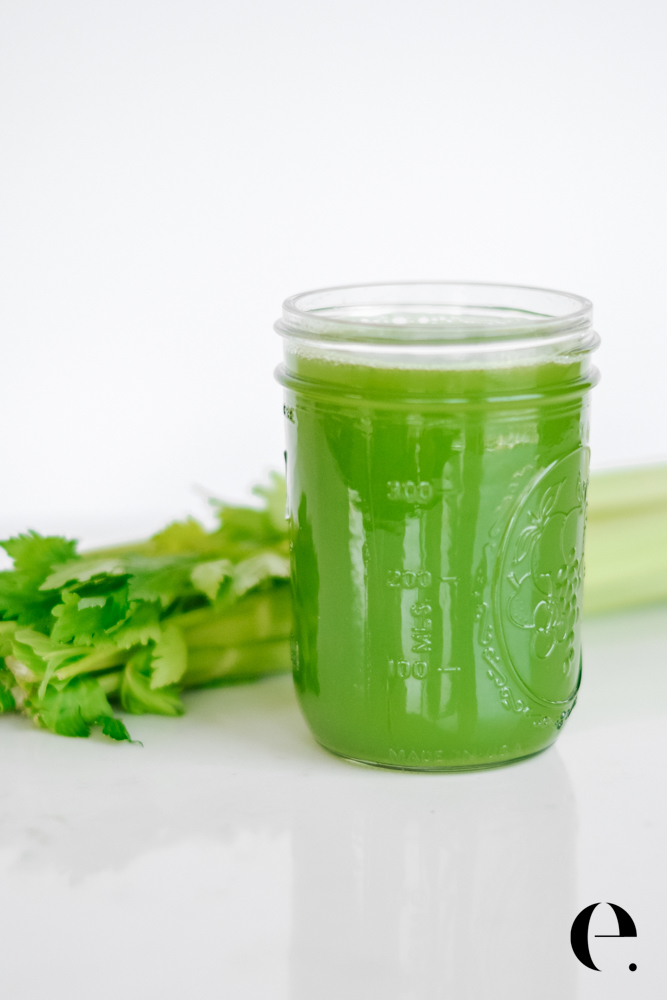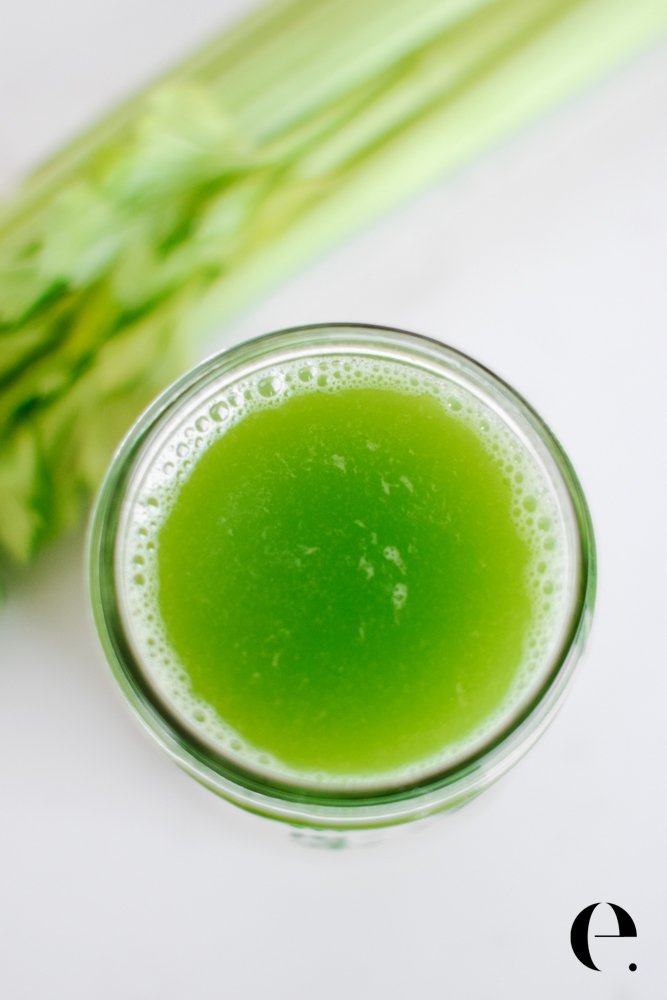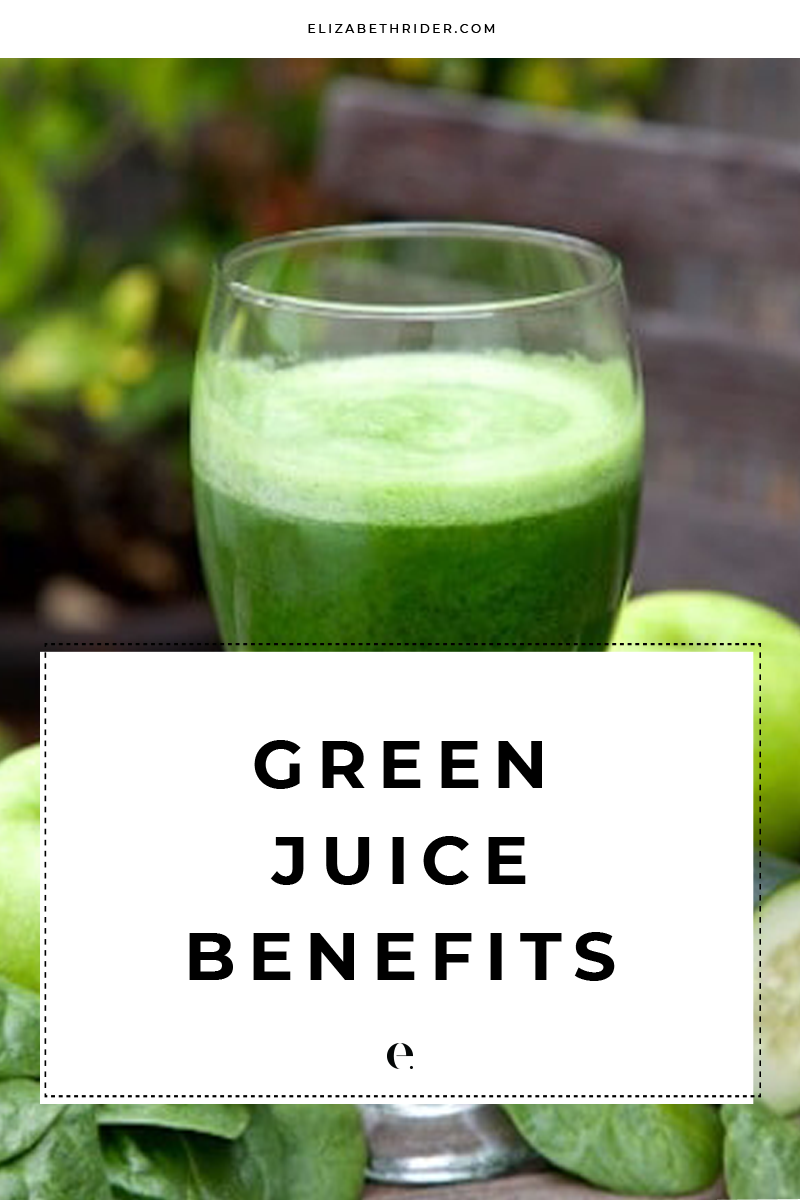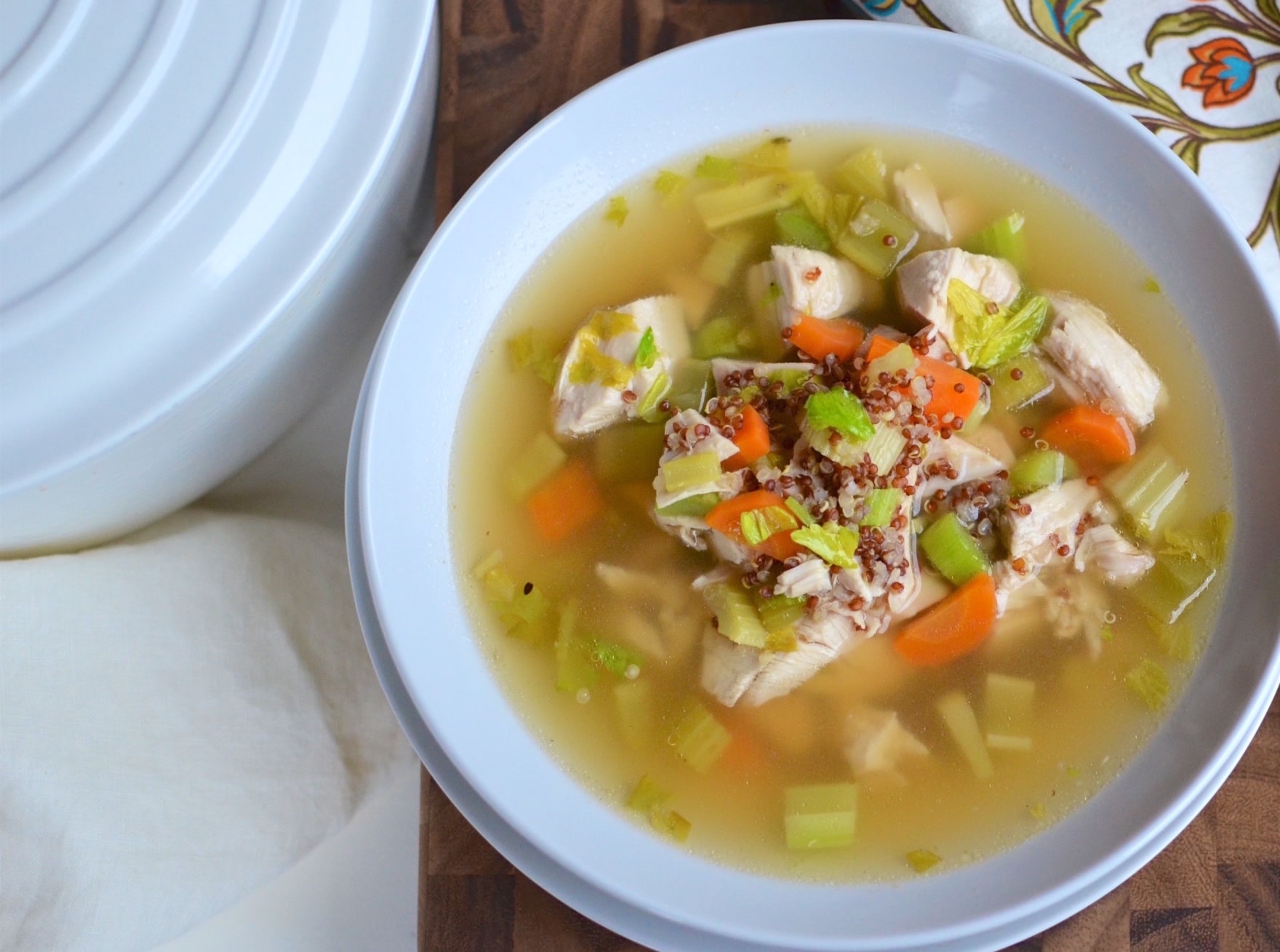Easy Green Juice Recipe | Elizabeth Rider


This green juice recipe benefits your body in more ways than one—it’s full of nutrients and low in sugar, making it the best way to maximize its benefits.
There is a right way and a wrong way to make a healthy green juice. They key is to keep the sugar low while using ingredients that keep the flavor nice and refreshing.
Benefits of Green Juice + Nutrition
Some people debate if green juice is healthy or not. In my opinion, a green juice recipe that is low in sugar is a wonderful addition to a healthy lifestyle.
- Increase Nutrient Intake: Depending on the vegetables used, green juice is a great way to naturally boost your vitamin, mineral, and antioxidant intake. It’s nature’s multivitmain!
- Reduce Overall Inflammation: Fresh green juice reduces inflammation in your body, and according to Christine Lydon, MD, of Yale Medical School, “Inflammatory processes lie at the root of virtually every chronic disease process known to modern man – from obesity and diabetes to heart disease and cancer.”
- Increase Cellular Hydration: Green juice provides just the right balance of water and minerals to increase your body’s overall hydration, which can help with anything from skin itching to brain fog to reducing sugar cravings. You can feel more hungry when you’re dehydrated, so improving your overall hydration can help you eat a more balanced diet.
- Improve Your Digestion: The enzymes in fresh green juice improve your digestive health, and most health experts believe at least 80% of your immune system lives in your digesting system. Drink up.
- Strengthen Your Immune System: Green Juice drenches your body in plant nutrients and chlorophyll (aka liquid sunshine.) Chlorophyll strengthens your immune system, helps control inflammation, increases red blood cell production, and helps enhance your cells’ ability to carry oxygen.
- Improve Your Skin Health and Gut Health: So long as you keep the sugar low, the extra hydration and gut-healing benefits of green juice make it especially good for your skin, keeping it clear and giving you that extra dewy, healthy glow.
But what about the fiber?! You do lose the fiber in the plants when you make green juice, so as long as you’re getting fiber from other foods then yes, you should drink green juice. You can make a green drink in the blender and leave the pulp in (which is called a smoothie) 🙂

Healthy Green Juice Recipe Ingredients
I consider this a “beginner green juice” for it’s light, refreshing flavor. The base of this recipe is mostly cucumber, which makes it wonderfuly easy to drink. For a more intense “green” flavor, check out my Kale-aid recipe.
- 2 large organic cucumbers
- 3-5 ribs organic celery
- 1 large broccoli stem (cut off all florets and reserve them for another recipe)
- 2-3 leaves green kale
- 1/2 organic apple or pear
- 1/2 organic lemon, peeled before juicing (Or squeeze it in at the end; do not put lemon peel through a juicer as the essential oils consentrate and can cause severe gastrointestinal upset.)
- Optional: 1 to 2-inch knob of fresh ginger
Check out the full printable recipe in the recipe card below.
The ingredients in green juice have excellent healing and detox properties. It’s a great way to start your day. Feel free to add any other fresh veggies you have in the house; a good rule of thumb is at least three veggies to every piece of fruit to keep the sugar down and your blood sugar balanced.
Green juice floods your body with nutrients and hydration that are easily absorbed in your digestive system, especially when you drink it on an empty stomach. To make sure you still get enough fiber, add in a healthy smoothie, a delicous healthy salad, whole grains, and whole fruits and veggies into your eating plan.
How to Make Green Juice
Here are some important notes to make sure you make the healthiest and best green juice possible:
- Get a high-quality juicer. I have the Breville Juice Fountain™ and love it. Find the best juicer that works for you. If you don’t have a juicer, you can blend everything in a blender and use a strainer, nut milk bag or cheesecloth to strain it (or don’t strain it for a green smoothie instead). If you’re new to juicing read my post Centrifugal vs. Masticating Juicers: Which Juicer Is Best? to help you pick the best one for you.
- Stick to water-filled green veggies and leafy greens, like cucumber, celery, broccoli stems, kale, and spinach.
- Avoid adding excessive amounts of fruit or any sugar to your green juice as sugar creates inflammation and can harm your digestion, which is the exact opposite of the green juice benefits you’re seeking.
- Create Your Own: Once you’ve made the base recipe listed below a few times, consider changing it up with different green veggies. Fresh leafy herbs with stems like cilantro and parsley can be a great addition if you like those flavors. Romaine lettuce can also add a milk flavor if you want to use some up (but I typically save my romaine for a salad). Green apples also add a nice tart kick of flavor if you like that.
- If you need more natural sweeetness, add 1/2 of an apple or pear to make any green juice more palatable if at first it’s too “green” for you. A small amout of pineapple also works wonders, but since we’re removing the fiber, stay mindful of how much you add. Apples and pears are full of wonderful enzymes and nutrients, but too much in your juice can add too much sugar. I also like to add a small amount of lemon or lime for extra vitamin c and that tangy citrus kick.
- Important! Never add the lemon or lime peel to a juicer as it concentrates the essential oils too much and can upset your stomach. Instead, always peel citrus before putting it through a juicer, or, simply squeeze a wedge of lemon or lime into your green juice instead of putting it through the juicer.
- Store: Green juice is best enjoyed right away to maximize the neneftis of the fresh nutrients and enzymes. The longer it sits, the more it’s exposed to oxygen, so it generally doesn’t keep for long periods of time. If you do want to store it, put it in an airtight container like a glass jar with a lid and store it in the refrigerator up to 1-2 days. If it smells or starts to turn brown it’s gone bad.
You can also check out my Kale-aid Green Juice Recipe—it’s another one of my favorites!
Find more healing recipes here.
Description
This simple and mild green juice is perfect whether you’re new to juicing or just looking for an easy, mild green juice. You can also check out my Kale-aid Green Juice Recipe for another all-time favorite green juice!
- Wash all produce well and chop into large pieces if necessary to fit into your juicer.
- Push each whole piece through your juicer
- Add a few ice cubes to your juice if you want your juice cold, and drink it right away as the nutrients will begin to degrade once exposed to oxygen. If you need to store it, you can store it for up to 24 hours in an airtight container for up to 24 hours.
Tip: If you’re new to juicing, skip the kale for a while. It’s so good for you but is a very strong flavor. Ease into juicing with milder greens and as you grow to love it, add the kale and other strong greens.

Want more healthy living benefits? Check Out These Posts:
Bringing Sanoviv Home Part 1
Bringing Sanoviv Home Part 2
5 Reasons You Should Drink Lemon Water Every Day






